
The Toronto Boat Show wraps up this weekend and it is jam-packed with events, sights, and of course, lots and lots of people. Everyone is particularly interested in one corner of the building, near the very back, Twiggy’s lagoon. A small rodent making her rounds on tour all over North America, doing what you ask? Promoting water safety.

Twiggy is an eastern grey squirrel from Florida who water-skis, yes, water skis. This dates back to 1978 when a baby squirrel was rescued after a tropical storm. Chuck and Lou Ann Best chose to take her in as a rescue. She became part of the family and in no time they were inseparable.
Shortly thereafter, Chuck bought his daughter a remote controlled boat for her birthday and thought it would be a funny joke to teach their squirrel to ski. This isn’t the same squirrel we see in the touring shows today though. Throughout the years, the Bests say they have added other rescues to the roster that they have also been taught how to waterski.

It wasn’t long until Twiggy gained exposure. Media outlets began contacting the Bests for interviews and to film stories on Twiggy. The first news story on Twiggy was published by ABC News out of Orlando, Florida which ran on Good Morning America. They won an Emmy award for the story. After the media frenzy, Twiggy began getting calls for tv shows and gigs for movies. Since then, twiggy has appeared in movies such as Anchorman: The Legend of Ron Burgundy, Dodgeball: A True Underdog Story, Megamind and more.
In November of 1997, Chuck Best drowned while saving his stepfathers life. Lou Ann canceled all shows booked for the winter of 1998 but then one afternoon saw a squirrel at the back window and took it as a sign to keep on going. Because of her husband’s passing, Lou Ann dedicated Twiggy’s act to water safety. She created a squirrel-sized life jacket for Twiggy to wear in her performances out of a beer cozy. After that, all of Twiggy’s shows were focused on teaching her fans about water safety.

Fast forward, thirty-nine years later and Lou Ann and Twiggy VIII retire their tour together; Last stop, Osteen, Florida. Throughout her career, she was able to travel the world fulfilling her dreams, training 8 water skiing squirrels and spoke to millions of people about the importance of water safety.
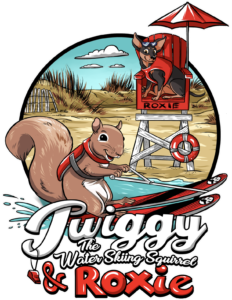
Although It doesn’t stop here! Lou Ann’s son, Chuck Best Junior has reimagined the families quirky business and is ready to start a new chapter of Twiggy’s legacy. This marks the 40th anniversary of the tour and comeback of the company since Lou Ann’s retirement. The tour features stops throughout the United States and Canada with two new squirrels, two friends and dog, Roxie.
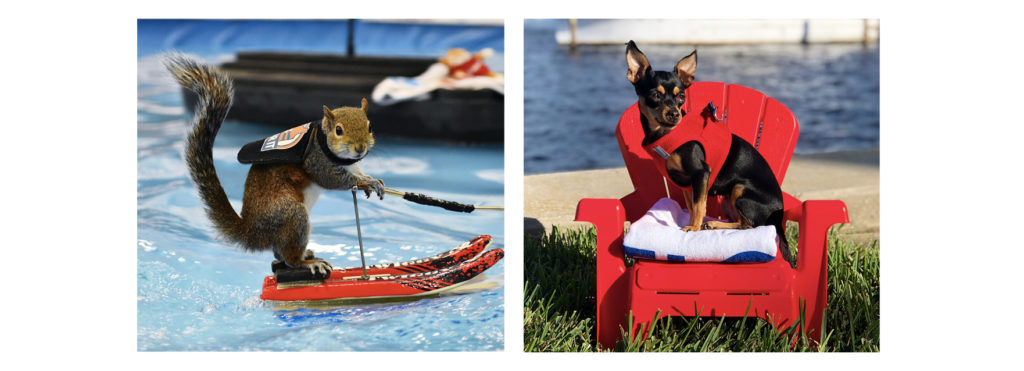
Viral Videos Fuel Animal Cruelty
Viral videos have taken over the internet forever. From funny ones, to silly ones, to ones that make you wanna cry, anything can go viral. But nothing gets more views than cute animals.
If you’ve been online for more than a day, you’ve probably shared a cute animal photo/video at least once. From Mishka, the talking husky to Grumpy cat, animals have been racking up views online for a while now. It is estimated that 45 percent of people who post videos online, will upload an animal video at least once. Clearly, the internet’s love for animals is pretty strong.
But what if the cute viral videos you’ve been watching aren’t cute at all?
Most animal videos that go viral do not show the whole picutre. The reality is, animals have been exploited and used for entertainment purposes for a long time. The internet and viral videos are sadly just another platform where these animals can be used to gain views and make money.
Sonya, The Slow Loris
A video titled “And now… at last – Sonya!!!! (slow loris tickle)” was uploaded to Youtube on April 26, 2009. The video shows an adorable slow loris named Sonya. The furry creature is shown lifting his arms up and tilting his head back while being tickled. The video shortly blew up online. It now has over 600,000 views.
But a bit of research into slow loris’s will tell you that this is actually torture for the animal. Slow Loris’s do not like being tickled, and Sonya is actually in a defensive position.
IRA, the International Animal Rescue Organization launched its campaign, “Tickling is torture”.
“When a slow loris is tickled it raises its arms above its head, not because it is enjoying it but in an attempt to defend itself by accessing a venomous gland on the inside of its elbow,” IAR explained in a statement.
Videos like this and others have fuelled the demand for owning one of these big brown eyed primates, despite them being nocturnal and unsuited for domestication. Because of this, the animal continues to be funnelled into the cruel and illegal exotic animal trade.
How Slow Lorises become ‘pets’
1. Thousands of Slow Loris’s are captured from their homes and sold on the streets or in markets.
2. Then, without anesthetic, their teeth are cut out with nail clippers or pliers. This is to protect humans from their possibly deadly venomous bite.
3. Next, the Lorises are transported in dark, poorly unventilated and crowded containers. This causes extreme stress on the animal. The morality rate in these containers is between 30-90%.
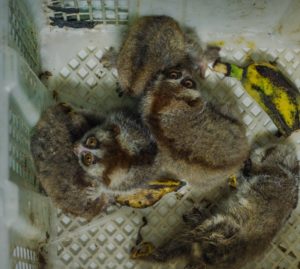
The owner who uploaded the video of Sonya the Slow Loris says they live in Russia, where is it not illegal to own these animals. They say Sonya was born in a Loris nursery and purchased in a local pet shop.
None the less, the illegal trade is still greatest threat to the Slow Lorises survival. The species is in serious danger of extinction.

The twitter account, @SandMonkey457 uploaded a video in May of 2017. It showed an adorable fluffy dog walking like a human, on only its back legs.
The original video was downloaded from the Chinese app, Huoshan Video. The owner’s account is called ”Wanghong Doudou” — translating to “Viral Smol Bean”. They upload multiple videos of ’Smol Bean’, dressed in different outfits while walking around on her hind legs. The account has over 40,000 followers.
There are many other accounts on Huoshan Video that feature dogs walking on their back legs.
But dogs legs are not built to handle extra strains and weight. Dogs front legs carry two-thirds of it’s body weight. Their back legs are not equipped to handle the dog’s entire weight.
How do the dogs preform these tricks?
PETA, People for the Ethical Treatment of Animals says, “Animals perform tricks only because of human involvement—and many times that means physical violence and psychological torment were used.”
A twitter user posted another leaked video of a dog that looks similar to Smol Bean. “This is how they’re trained to stand upright and walk.” The video shows a frightened dog being hit with a shoe multiple times while standing on its hind legs.
Another video shows a man using using brut force for 15 minutes, trying to make a similar dog stand on its back legs.
Smol Bean’s owner posts videos showing viewers how he chooses to train the dog. He guides her with his hands, and rewards her with a treat.
How can we know if a viral photo of video is cruel or abuse?
Photos or videos that do not include human interference are probably harmless. Animals are beautiful creatures in their natural habitats.
What can we do?
You can help by reporting any act of animal cruelty that you’ve witnessed on Facebook, Instagram, Twitter, YouTube, Twitch, or TikTok to PETA.
Sonya and Smol Bean are only two examples of the countless amount of animals being exploited online. And sadly, the possibility of going viral simply encourages this cruelty.
Written by Sara Piazza
Cruelty Within Canada
The Canadian Criminal Code Sections 444 to 447 penalties animal cruelty offences as follows: injuring or endangering animals, causing unnecessary suffering, and wilful neglect. But, is that enough?
According to Humane Canada, this code is outdated and does not sufficiently protect animals from all forms of cruelty. Among tens of thousands of animal abuse complaints are made in Canada each year. In the early 2000s, the CBC and OSPCA reported some regions numbers rising with incidents springing from approximately 13,000 in 1996 to over 16,000 in just a couple years. PETA suggests that this number continuously increases. Today there are around 45,000 complaints made.
Consequently, there are many different categories of abuse including, bloodsports, animal testing, captivity such as zoos, circuses, and oceanariums, killing, mutilation, specific types of consumption and factory farming. In Canada, you’d be surprised how much of this goes on, and not all of it is as hidden as you would think. These are some of the current animal cruelty issues going on right under the noses of Ontarians.
Breeding Mills
PETA says Breeders, pet shops, and puppy mills fuel the animal overpopulation crisis. What some people don’t know is that when they are buying from pet retailers they more than likely to be buying from breeding mills. Activists say animals are treated as mere moneymaking commodities. Mothers and litters are kept in tiny cages or hutches. They’re denied socialization, exercise, and even basic veterinary care. Mums are bred over and over again until they can no longer reproduce. This can lead to numerous health complications including inbreeding. Then, they are auctioned off to the highest bidder or killed, without getting to experience a fair life.

Back in 2011, Toronto banned the sales of dogs and cats in pet stores due to neglect, cruelty and the belief that pet stores are not a healthy environment for animals. A lot of retailers in the GTA and surrounding areas joined the movement shortly after. In 2016, the city of Richmond Hill banned animal sales from commercial breeders after activists brought local retailer Pet’s Friend to the cities attention. It was believed they were sourcing their animals specifically puppies from puppy mills in Quebec where laws are less harsh.
In Newmarket, Ontario, there is a retail pet store located on the corner of Younge Street and Mulock Drive called Pet’s Friend. There too, you can buy puppies of various small breeds ranging from King Spaniels to Yorkipoos, Malteses to Yorkshire terriers, and even kittens. York Region’s council believes this is where the shop has relocated after the ban was put into place in Richmond hill in 2016. Since then, activists have created a petition trying to shut it down.
Cosmetic Testing
Each year thousands of pets are purchased by research facilities from municipal shelters and used for experimental purposes. They are subject to a life of pain and suffering and eventually killed. Ontario is the only province, in all of Canada, where there is legislation protecting animals in shelters against this called the Ontario Animals for Research Act. These once loved pets or animals in search of a good home, are then tested on with cosmetics, household products, pesticides and poisons, drugs and many other substances. It is legal in Canada to subject these animals to the most severe levels of pain without relief.
Bill S-214 is the Cruelty-Free Cosmetics Act and would have ended animal testing in Canada. The Bill died when Parliament dissolved ahead of the October 2019 federal General Election. Canadians haven’t heard many updates since.
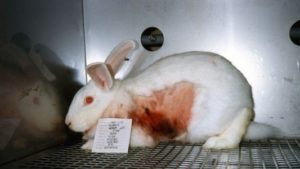
Captivity and Trafficking
In 2019, Canada’s Parliament passed long-awaited legislation banning whales, dolphins, and porpoises from being bred or held in captivity. But the bill contained some exclusions; marine mammals already held will be allowed to remain in captivity. Also, the animals can be kept during rehabilitation from injury or for the purposes of licensed scientific research. Animal rights activists celebrated the news but this didn’t keep them quiet for long. Ripley’s Aquarium to be their next target on the agenda.
Back in 2013, as Ripley’s Aquarium first started breaking ground on Bremner Boulevard, the Sea Shepherd Conservation Society circulated a petition to stop Toronto from granting Ripley’s an import permit for sharks and other aquatic life. This is because 98 percent of sea life can’t be bred in captivity, have to be uprooted from ocean reefs and are usually caught with illegal chemicals like cyanide.
The World Wildlife Federation says approximately eighty percent of these fish die before they’re even sold and the ones that make it, typically don’t past their first year. In addition to this, aquatic life are also put under tremendous amounts of stress when being transported and rehoused into these tanking units.
Farming Transportation
In February 2019, Canadian activists voiced their let down by the government when another at the expense of farm animals welfare. Similar to the previous regulations in 1977, livestock will continue to be transported in overcrowded stalls, for extended periods of time in all weather conditions without food, sleep, or water. Veterinarians recommend a 12-hour travel limit for laying hens but the new law allows the hens to be transported for up to 28 hours without food, rest and water!
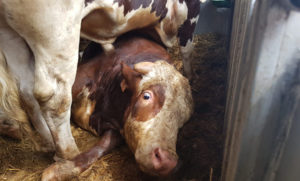
The 2019 regulations allows these animals to be transported without food, water or rest for as follows:
- 12 hours for compromised animals
- 24 hours max without access to safe water for broiler chickens, spent laying hens and rabbits; and 28 hours max without access to feed and rest
- 28 hours for horses and pigs
- 72 hours for day-old chicks
- 36 hours for all other animals
Furthermore, farm animals are transported in very tight spaces and exposed to extreme temperatures in Canada. The new legislation does not require trucks be maintained at certain temperatures or carry amenities on-board such as food or water in case of any emergencies. Regulations also continue to allow transporters to use electric prods on farm animals. Animals put in such situations are at risk to the elements, starvation, exhaustion as well as being trampled to death.
What’s Being Done
There are already numerous organizations and charities in place working together supporting different causes, all hoping for the same outcome. These all around improved animal welfare and a creating a better relationship between the environment, animals and humans. These are just a few organizations that are leading change, but are not limited to:
Animal Justice – National animal law organization that leads the legal fight for animals in Canada. Goes to court to fight on behalf of animals.
GRASS – all animals have feelings therefore have the right to live a life free of human exploitation
The Save Movement – A worldwide network of groups bearing witness to farmed animals and advocating veganism.
Canadian Coalition for Farm Animals (CCFA) – is dedicated to the welfare of animals raised for food in Canada through public education, legislative change and consumer choice.
Mercy for Animals Canada – Creating a society where animals are treated with the respect and compassion. Campaigns include: the rotten truth – egg production, undercover investigations and, pro-veg TV ads.
People for the Ethical Treatment of Animals (PETA) – Engages in public education, investigations, legislation, celebrity involvement, and protest campaigns to help animals on factory farms, in labs, in the clothing trade, and in the entertainment industry.
Written by Averie Armstrong
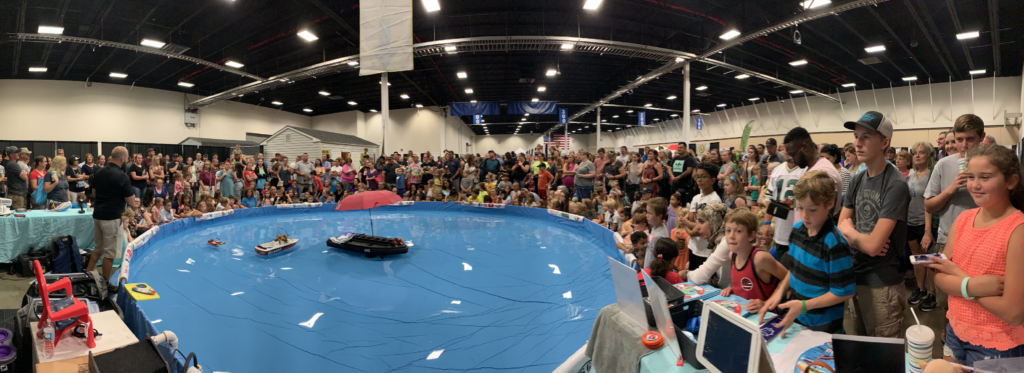
But despite the success, Twiggy’s act isn’t as popular with everyone as you would think. Although the act is seen to some as fun and harmless, if you look deeper many others comment there’s a much darker, cruel treatment of animals going on and that the Best’s profiting off these rescues is wrong.
Since Twiggy’s performances at the Toronto International Boat Show have started many people have sparked interest in the act and with interest comes more social interaction.
Someone posted a video of Twiggy’s performance on the social media app Tik Tok and it went viral.
One of the accounts that commented on the video, is owned by Shelby Costa. She claims the act is unnatural and cruel to the animals.
The Toronto Wildlife Centre saw the video and social media uproar and posted a video of Twiggy skiing to instagram and twitter saying the act was cruel and should be banned from preforming in Toronto. Since then, investigators have looked into Toronto municipal by laws and seen that not only is Twiggy preforming wrong ethically, it’s also illegal!
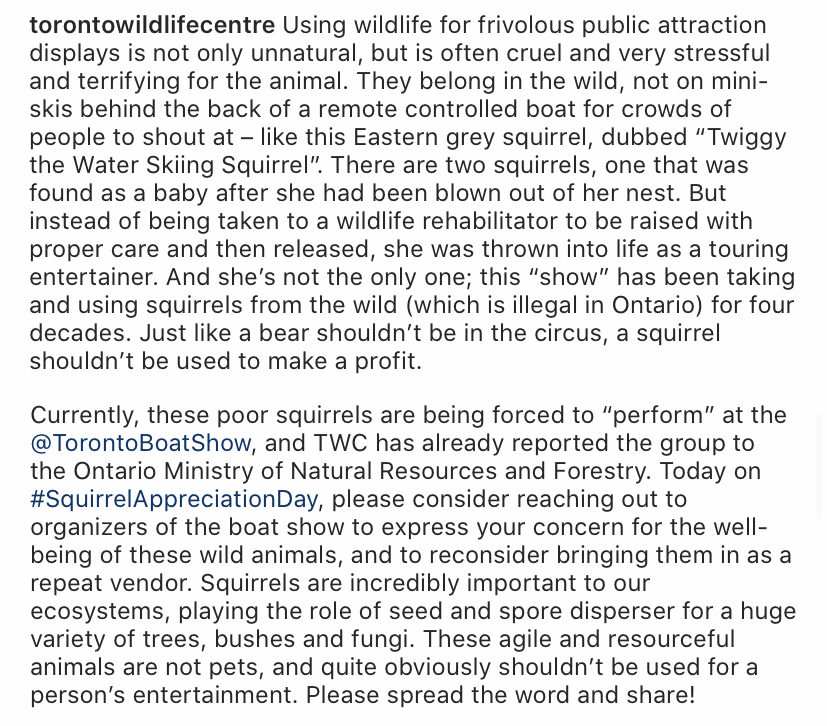
In Toronto it’s illegal to have an Eastern Grey Squirrel in captivity let alone have it appear as a celebrity guest to preform at events, and get paid! They said moving forward, next year rules will be enforced and Twiggy will no longer be allowed to preform in Toronto due to these laws and the moral behind them.








Be the first to comment